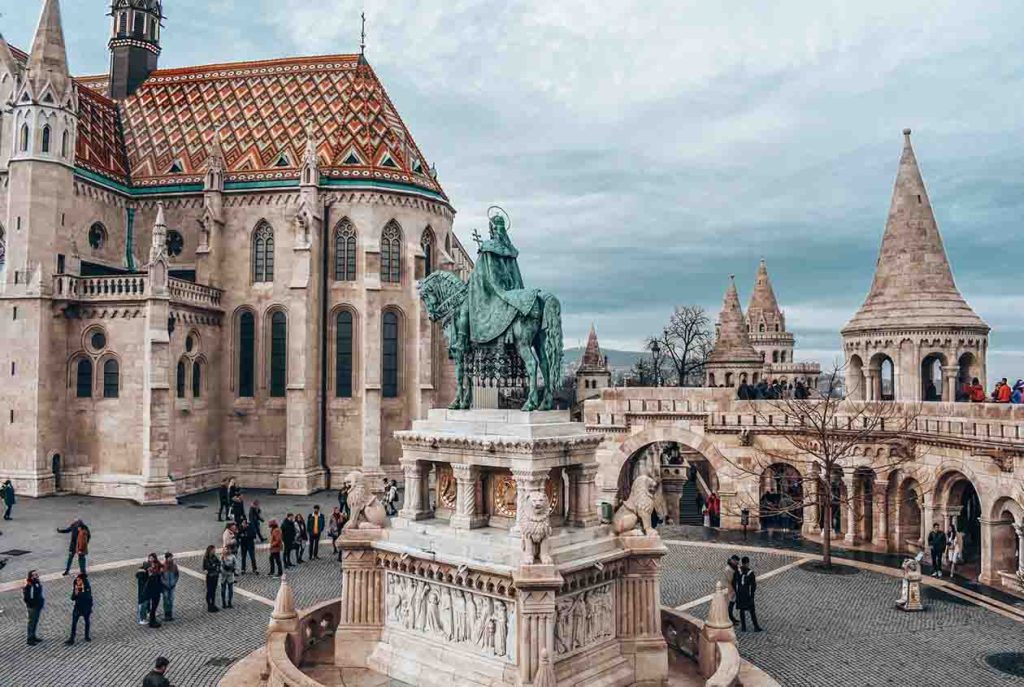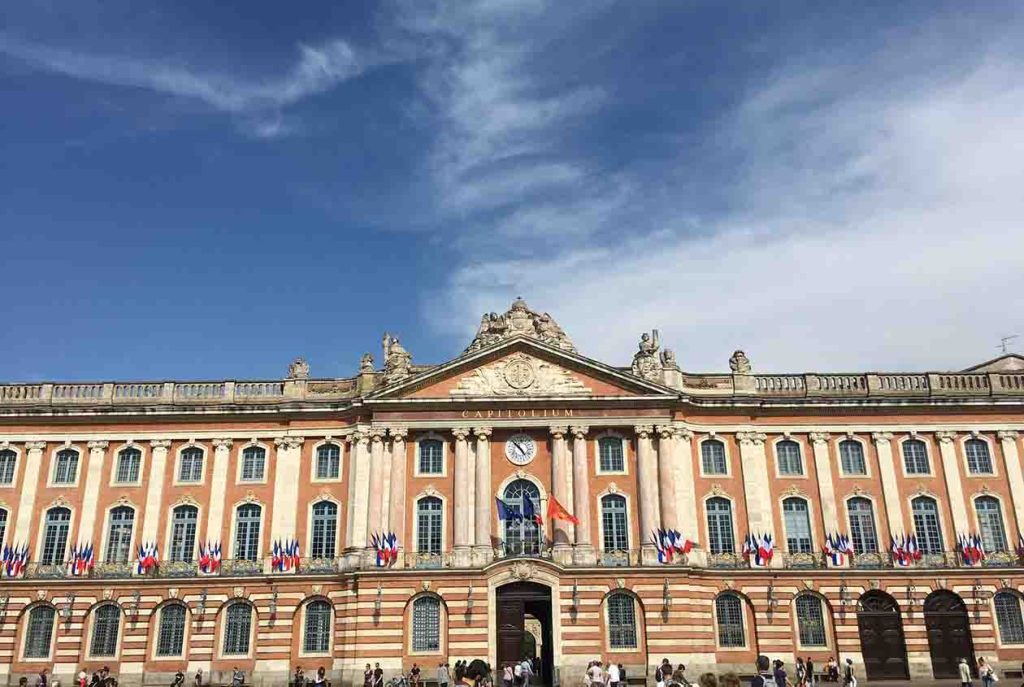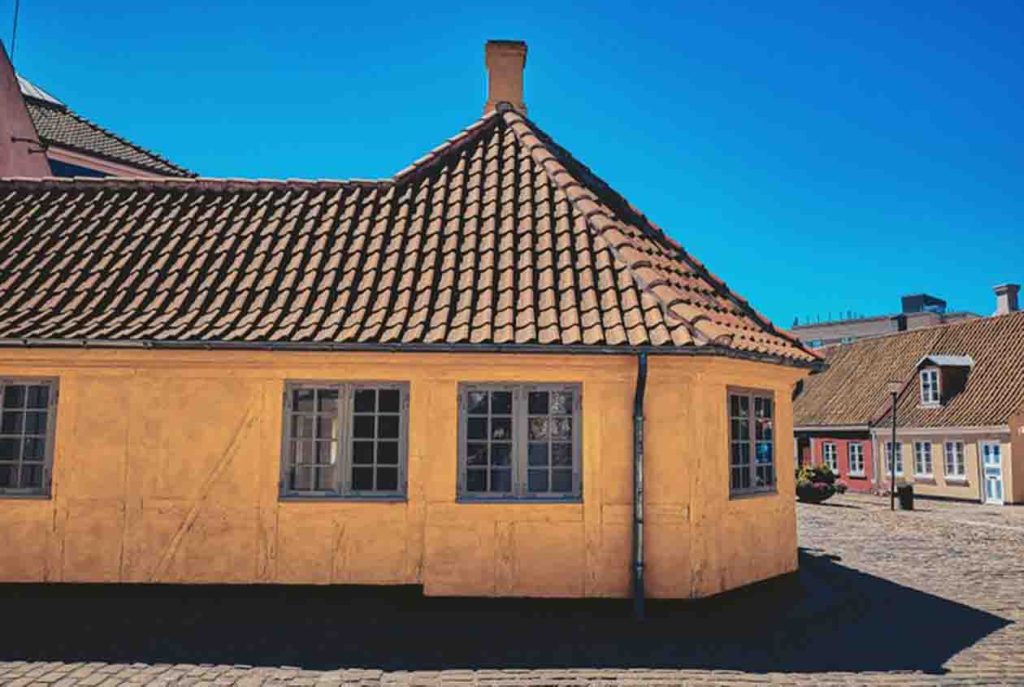
Denmark, a brilliant jewel in Scandinavia, is home to many cities and landmarks rich in history and culture. Among them, Odense, the birthplace of the world-renowned fairy tale writer Hans Christian Andersen, is undoubtedly a cultural treasure. This city is not only where Andersen was born but also the birthplace of his stories, thoughts, and creative inspirations. For all lovers of Andersen’s fairy tales, visiting Odense and touring Andersen’s childhood home is not just a trip; it’s a spiritual journey into the world of fairy tales and Danish history.
1. Odense – Hans Christian Andersen’s Hometown
Odense, located in central Denmark, is the third-largest city in the country. It is not only a city steeped in history but also a place where culture thrives. As Andersen’s hometown, Odense holds a significant place in literary history and has become a sought-after destination for visitors and literary enthusiasts alike.
The city’s streets and architecture are full of traditional Danish charm, with cobblestone alleys, ancient wooden houses, and colorful buildings. These features create a strong sense of history. Odense preserves many elements of its ancient layout while blending in modern developments, making it an ideal place to experience Danish culture. Strolling through the city, one can feel the quiet warmth of an old town, while also imagining young Andersen playing and finding inspiration for his fairy tales in these very streets.
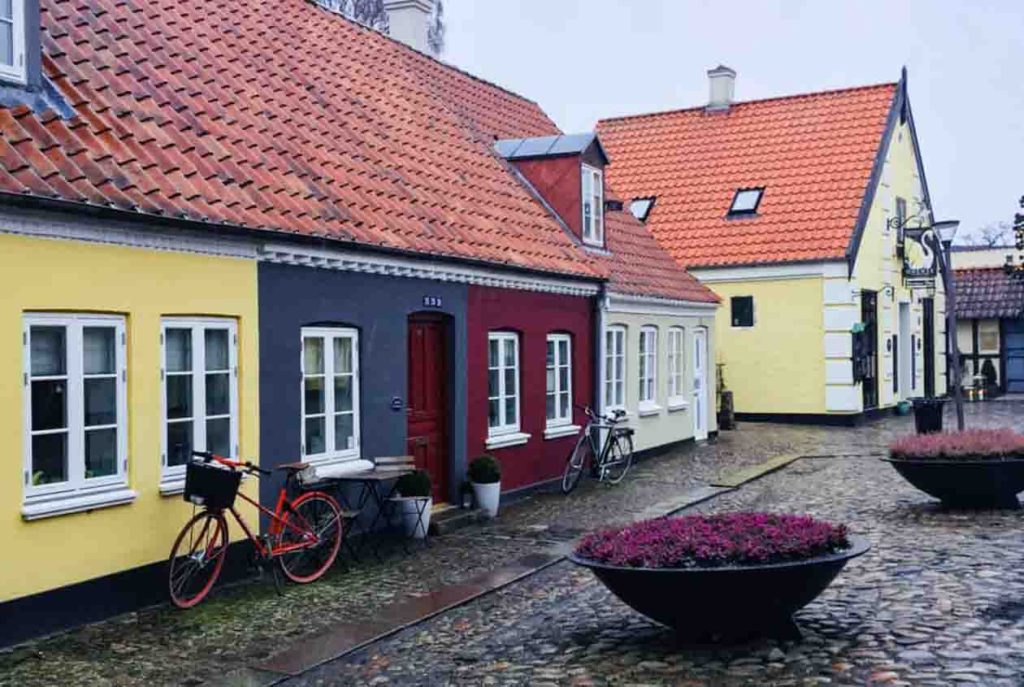
Hans Christian Andersen’s childhood home is located in Odense’s old town, surrounded by the typical Danish architectural style and local life. Walking through these streets, you can almost see little Andersen running around and playing, or drawing inspiration from the corners and alleys of the city. Odense itself feels like a living fairy tale setting from Andersen’s works, where dreams and reality blend.
2. The Historical and Cultural Background of Andersen’s Childhood Home
Hans Christian Andersen was born in 1805 in a modest house in Odense. His family was not wealthy—his father was a shoemaker, and his mother was a hardworking housewife. Despite their poverty, Andersen showed a strong interest in literature and art from a young age. Although his family’s financial situation was difficult, his mother did her best to provide him with basic education and encouraged him to read and create. This environment would become the wellspring for much of Andersen’s later writing.
During his childhood, the streets of Odense were filled with stories and characters that would later appear in his tales. It’s widely believed that many of Andersen’s stories were inspired by his early life experiences and the people and events he encountered in Odense. For example, “The Ugly Duckling,” with its themes of self-discovery and growth, was likely influenced by Andersen’s own struggles with poverty and social oppression. His determination to dream and pursue his ambitions is rooted in his experiences as a young boy facing hardship.
While his family wasn’t wealthy, the small house they lived in gave Andersen a spiritual foundation. Whenever he played in his father’s small shoe shop, his father would tell him folk tales, which not only enriched his literary imagination but also became the bedrock for his creative work. Even though Andersen’s mother was illiterate, she often supported him in his early writing efforts, reading stories and discussing his ideas with him, further nurturing his passion for creativity.
Nevertheless, Andersen never gave up on his dreams, and his poverty only fueled his desire to change his fate through literature. At 14, he left his hometown and moved to Copenhagen, carrying with him hopes for the future and a determination to pursue his literary passion. Although Denmark offered limited support for artists at the time, Andersen steadfastly pursued his beliefs, eventually finding success with his first big breakthrough, The Improvisatore.
Andersen’s childhood home itself witnessed this great writer’s journey. Originally the family residence, the building has undergone multiple repairs and renovations, eventually becoming a museum open to the public. The museum now houses many items related to Andersen’s life and work, including his manuscripts, letters, books, and personal belongings. Visiting this childhood home provides a glimpse into the life of this literary giant, allowing visitors to understand the stories behind his fairy tales.
In the museum, visitors can see not only Andersen’s life story but also the profound meanings behind his works, from The Ugly Duckling to The Little Mermaid. Each story carries pieces of Andersen’s childhood memories, life experiences, and reflections on social injustice. Many characters and events in these works reflect Andersen’s own personal growth and struggles, offering insight into both the man and the writer.
3. The Experience of Visiting Andersen’s Childhood Home
When you step through the doors of the Hans Christian Andersen Museum, you are transported into a fairy tale world. The museum’s design and exhibitions incorporate elements from Andersen’s works, with beautiful illustrations on the walls and lighting that interacts with the stories on display, immersing visitors in the enchanting atmosphere. Every detail seems to narrate the journey of this great writer, making you feel as though you’ve entered the very world of Andersen’s fairy tales.
1. Exhibition Hall and Manuscript Display
The museum’s central exhibition hall showcases numerous manuscripts, sketches, and first editions of Andersen’s books. These precious items not only show the hardships Andersen faced in growing from a poor child to a world-renowned author but also reflect his relentless dedication to literature. Each manuscript is a testament to his careful consideration of language, and many drafts and revisions illustrate his continuous efforts to refine and improve his work. For example, you can see early drafts of The Ugly Duckling, with revisions that reveal the effort Andersen put into perfecting his stories.
2. Interactive Exhibitions and Multimedia Experiences
To enhance the visitor experience, the museum offers several interactive displays. Through touchscreens and augmented reality (AR) technology, visitors can explore the plots of Andersen’s famous fairy tales and even take part in role-playing scenarios. These interactive projects are particularly fun for families and children, offering a lighthearted yet engaging way to explore Andersen’s work.
Furthermore, the museum uses virtual reality to allow visitors to experience Andersen’s creative inspiration. You can “dive” into The Little Mermaid’s underwater world or interact with characters from The Emperor’s New Clothes. This immersive experience not only adds fun but deepens visitors’ understanding and affection for Andersen’s stories.
3. Andersen’s Personal Living Space
Beyond showcasing Andersen’s literary achievements, the museum also features personal items from his daily life. Visitors can step into the rooms where he spent his childhood and see the simple furnishings that characterized his early years. Some of the items displayed are toys, furniture, and household goods from his youth, offering a glimpse into the hardships of growing up in a poor family while still maintaining a deep passion for literature.
Among the highlights is Andersen’s writing desk, a simple yet functional piece of furniture. The desk is equipped with old stationery, papers, and writing tools, all hinting at the writer’s intense focus and dedication. These personal items silently convey Andersen’s inner world, reminding every visitor of how this great writer evolved from an ordinary child into a towering figure in world literature.
4. The Garden and Andersen’s Statue
The museum’s outdoor garden is a must-see attraction. Here, visitors can walk through a lush green space and admire the magnificent statue of Andersen, depicted holding a book and gazing into the distance, as if pondering the next great story. This statue symbolizes both Andersen’s literary accomplishments and his unyielding pursuit of dreams.
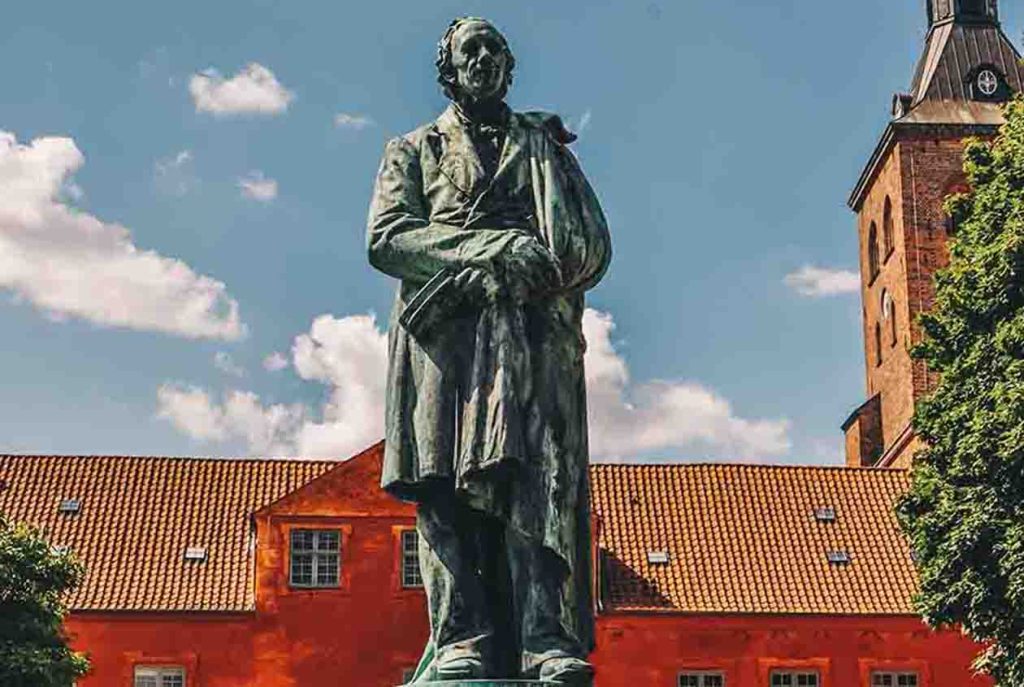
The garden itself exudes a fairy-tale atmosphere, with various Danish plants and flowers adding to its charm. If you have time, the small pond in the garden provides a peaceful spot for reflection, where many visitors sit and contemplate the emotional impact of Andersen’s works.
4. Surrounding Attractions and Travel Tips
Odense not only boasts Andersen’s childhood home but also offers many other places of interest for visitors. Some notable spots include Odense Cathedral, St. Joseph’s Monastery, and the Odense Museum, all rich in history and culture. If time permits, you can explore these attractions to further immerse yourself in the city’s cultural heritage.
1. Odense Cathedral
The Odense Cathedral is a Gothic-style church dating back to the 13th century and still stands proudly in the city center. Inside, visitors can admire beautiful murals, sculptures, and preserved religious artworks. You can also climb the tower for a panoramic view of the city, especially breathtaking in the early morning or at sunset.
2. St. Joseph’s Monastery
Located in the city center, St. Joseph’s Monastery is an ancient site that exudes tranquility. The architecture and gardens preserve a medieval atmosphere, making it a peaceful destination for reflection, in harmony with the gentle, thoughtful nature found in many of Andersen’s works.
3. Odense Museum
The Odense Museum is dedicated to the history, culture, and art of Denmark, particularly the region around Odense. The museum’s extensive collection of artwork, including pieces by local artists, provides an in-depth understanding of Danish culture and history, as well as the artistic traditions that helped shape Andersen’s work.
5. Travel Tips for Visiting Andersen’s Childhood Home
1. Best Time to Visit
Spring and autumn are the best times to visit Odense, with mild weather making your trip more enjoyable. Summer, although busy with tourists, is also a great time for a visit. Winter offers a quieter experience, ideal for those who prefer to avoid the crowds.
2. Getting There
Odense is easily accessible by train or long-distance bus from Copenhagen, with a journey time of about 1.5 hours. Once in Odense, the city is small enough to explore on foot or by bike, making it easy to navigate.

3. Accommodation Recommendations
Odense offers a variety of accommodations, from budget hotels to luxury resorts. It is recommended to stay near the city center for easy access to main attractions. Hotels in Odense are modern and provide excellent service.
4. Dining Recommendations
The culinary culture of Odense is rich and unique, with traditional Danish dishes to try. You can sample local specialties like Smørrebrød (open-faced sandwiches) and various seafood dishes. Restaurants in the city take great care in using fresh ingredients and presenting their food beautifully, offering an excellent way to savor Danish culture.
Conclusion:
Odense, the birthplace of Hans Christian Andersen, is more than just a tourist destination. It is a cultural sanctuary. Here, visitors can not only learn about the life of this great writer but also immerse themselves in his magical and philosophical fairy-tale world. Whether you are a fan of Andersen’s works or simply interested in literature, Odense will leave a lasting impression. The city, deeply rooted in Andersen’s literary world, offers every visitor a journey filled with imagination and reflection.
